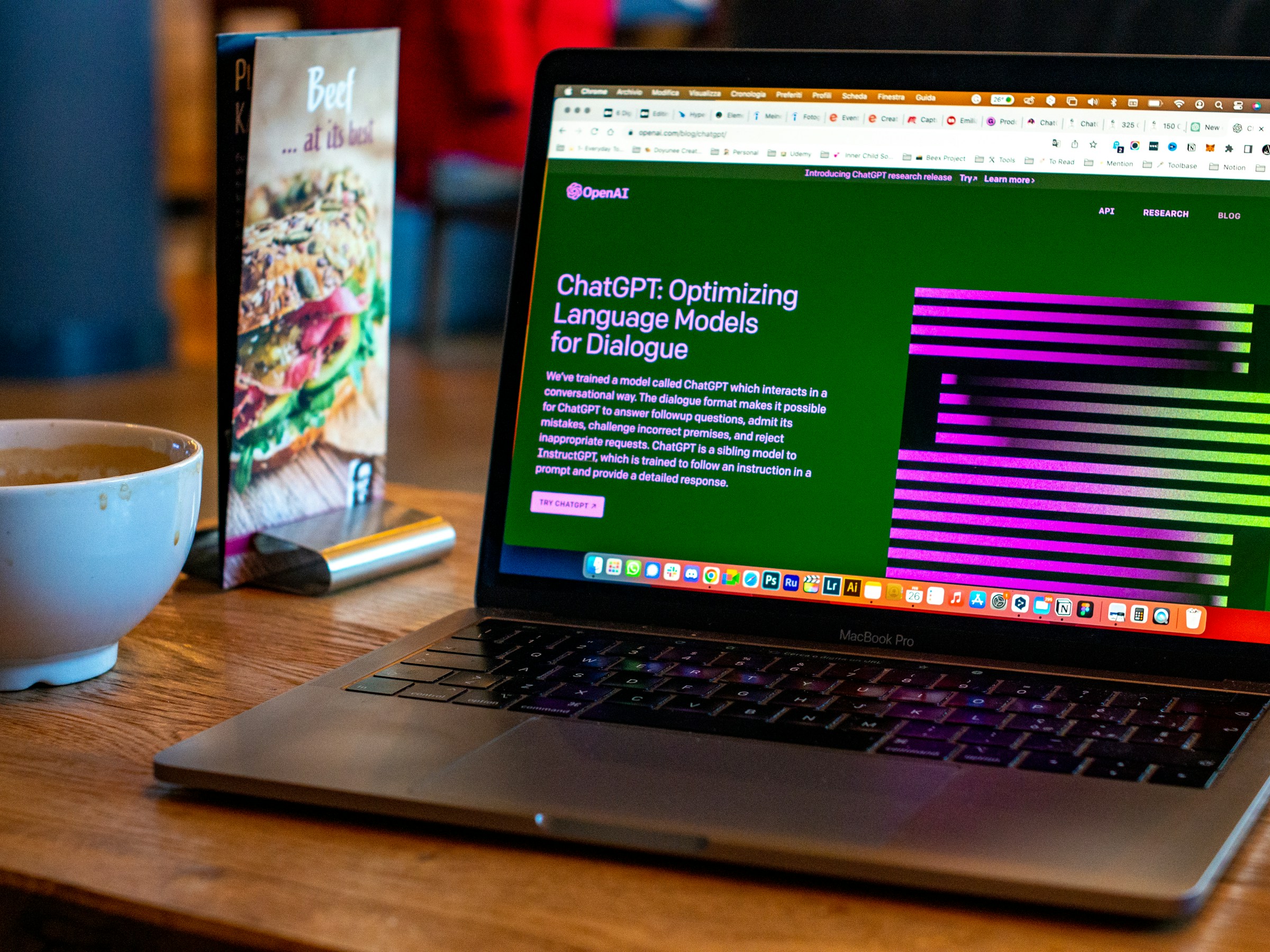< Back
Practical Tips and Examples on How To Get ChatGPT To Cite Sources
Declan Gessel
Sep 12, 2024
Consider you’re staring at a blank screen, battling with your essay, and you think, "I’ll use an AI to find sources for essay!" But then you hit a snag. ChatGPT gives you some great info, but where are the sources? Without proper citations, your essay might as well be fiction. Frustrating, right? You’re not alone.
Many users want to know how to get ChatGPT to cite sources and make their work legitimate. Fortunately, this article is here to help. We’ll share some practical tips and examples to guide you in using ChatGPT to find and cite accurate sources properly.
One tool that can help is Jotbot’s source finder. It’s a nifty feature that digs up sources while you chat with ChatGPT.
Table Of Contents
How Can Jotbot's AI Source Finder Assist in Finding Academic Sources?
What Steps Should I Take to Verify the Accuracy of ChatGPT Citations
Write Smarter With Jotbot's Source Finder — Start Writing for Free Today
What Are the Limitations of ChatGPT with Source Citation?

ChatGPT's design doesn't include real-time access to external sources. It draws on patterns from its training data, resulting in responses that might sound right but aren’t backed by actual sources. It treats bibliographic data like any other text, leading to messy and incorrect citations.
Its training data also includes various texts, which means citations might need to be updated or just plain wrong. A big issue is fabrication; ChatGPT often creates fake citations. This makes its responses tricky to trust and verify, especially if you’re counting on accurate source information.
Common Misunderstandings About ChatGPT and Source Citation
Many users assume ChatGPT can verify responses or cite sources accurately, but it can’t. It doesn’t check external sources in real-time, so it can’t verify what it produces. It also can’t differentiate between types of bibliographic data, like different publication dates. People might think it can handle citations, but it often makes them up or gets them wrong, leading to errors in your writing.
What ChatGPT Can and CanNot Do Regarding Sourcing Information
ChatGPT is great for generating text, even with prompts. It can provide general information and assist with writing tasks, but always verify it separately. Regarding sourcing, it often makes up citations or includes errors. It’s not designed to add accurate citations to direct quotes. If you need reliable source information, use dedicated tools or databases instead.
Related Reading
• How To Find Good Sources
• Using AI For Research
• Citing ChatGPT
• How To Find Academic Sources
• How To Cite AI In MLA
• AI For Research Paper Writing
• Essay Sources
• AI In Academic Writing
• Most Reliable Sources For Research
Practical Tips for Getting ChatGPT to Cite Sources

Get ChatGPT to Cite Sources with Precision
When you’re using ChatGPT to find sources, clarity matters. Be specific about what you want and the types of sources you need. Say you’re exploring climate change impacts on food production, request references from academic journals or government publications. Type your prompt clearly in ChatGPT and scrutinize the response for any sources. Then, double-check these using reliable databases to ensure they’re legit and relevant.
Verify Sources Manually for Accuracy
Don’t just take ChatGPT’s word for it. Use tools like Google Scholar or PubMed to search for academic papers and validate the sources. Extract the critical details from ChatGPT’s response—like author names and article titles, and search these on trusted platforms. Cross-check with general search engines to make sure everything is accurate. Consulting with experts or librarians can also boost the credibility of your sources.
Combine ChatGPT with External Citation Tools for Better Accuracy
After ChatGPT helps you generate content, use external citation tools to find the right references. Jotbot’s AI Citation/Source Finder is your friend here. Generate your text with ChatGPT, then copy and paste it into Jotbot’s tool. This helps you find accurate citations and integrate them smoothly into your work.
Push ChatGPT for Better Source Quality
Always follow up with ChatGPT for more details. Ask for specifics like publication dates and journal names if it mentions a source. Clarify your initial question for a general response, then dig deeper with follow-up questions. As always, verify these sources manually to ensure they check out.
Be Mindful of ChatGPT’s Data Limitations
ChatGPT’s training data has cut-off dates. GPT-3.5 goes up to 2021, GPT-4 to April 2023, and GPT-4o to October 2023. When you’re seeking recent information, be sure to verify it manually. Use current academic papers, news articles, and official reports to fill in gaps.
Use ChatGPT as a Research Assistant
ChatGPT is great for generating ideas and finding sources. Ask it to create critical terms and potential sources for your research. Once you have this info, verify it using trusted databases. Expand your research from these starting points with more credible sources.
Leverage Advanced Models for Robust Citations
Access to advanced models like GPT-4 or GPT-4o can give you more detailed and frequent citations. Inaccessible mode, GPT-4o offers essential citations, but the paid mode provides more depth. Whichever model you use, always verify the citations to ensure they’re correct.
Start Writing For Free With Jotbot Today!
Jotbot is your personal document assistant and source finder. It does AI note-taking, AI video summarizing, AI citation/source finder, and even writes essays with Jotbot’s AI essay writer. Join over half a million users worldwide to write smarter with Jotbot's AI writing assistant. Start finding sources that are accessible with Jotbot's source finder today. Sign in with Google and get started in seconds.
Examples of Effective Prompts to Generate Credible Content

Get Specific with Your Prompts: The Key to Credible Content
Start by specifying what types of sources you want. Instead of saying, "Explain climate change's impact on food production," say, "Explain climate change's impact on food production with references from Nature or Science." This keeps your information reliable.
Follow-Up with Precise Citations: Don’t Let Details Slide
When you ask for follow-up citations, be exact. Instead of, "Can you provide sources for sustainable fashion?" go with, "Can you provide sources for sustainable fashion with authors, titles, and journal names?" This avoids incomplete citations.
Combine AI with Citation Tools for Better Sources
Use tools like Jotbot’s AI citation finder to source content accurately. Instead of saying, "Generate a paragraph on sustainable fashion," specify, "Use Jotbot’s AI citation finder to source content from academic journals or government publications."
Ensure Direct Quotes Are Properly Cited
Don’t just ask for a quote. Say, "Provide a direct quote on climate change with a full citation including author, title, and journal name." This ensures you get the proper citation.
Manual Verification Is Not Optional
Ensure you manually verify sources with trusted databases like Google Scholar or PubMed. Don’t just accept sources at face value.
Use Advanced Models for Better Citations
If you can access advanced models like GPT-4, use them to generate content with better citations. Specify that you want to verify these sources manually.
Requesting Citations for Specific Sections
If you’re asking for a section on sustainable fashion, specify that you want citations for each key point. This avoids missing or incomplete citations.
Combine Multiple Sources for a Complete Picture
If you’re writing about fast fashion, specify that you want information from multiple sources, such as academic journals, government reports, and industry studies. This ensures a comprehensive view.
Requesting Citations for Technical Information
If you’re asking for technical information on textile production methods, specify that you want citations from industry reports or academic studies. This ensures you get accurate citations.
Combining ChatGPT with Manual Verification
Use ChatGPT to generate content with references, but always manually verify these sources to ensure accuracy.
Lack of Specificity Is a Common Mistake
You risk unreliable information if you don’t specify the types of sources or the need for citations. Always be clear about what you want.
Inadequate Source Verification Is Another Common Mistake
You risk getting unverified sources if you don’t specify the verification process. Always determine how you want to verify the sources.
Ignoring SEO Optimization Is Yet Another Common Mistake
If you don’t include keywords, your content won’t be optimized for search engines. Always include relevant keywords.
Consistency in Tone and Style Is Essential
Your content will be inconsistent if you don’t specify the tone and style. Always include details about the tone and style.
Lack of Urgency Can Be a Problem in Ad Copy
Your ad copy will lack urgency if you don’t specify the desired action. Always include details about the desired action.
By refining your prompts with these considerations, you can generate credible content with accurate citations, ensuring the reliability and integrity of your work.
Start Writing For Free With Jotbot Today!
Jotbot is your personal document assistant and source finder. Jotbot does AI note-taking, AI video summarizing, and AI citation/source finder; it writes AI outlines for essays and even writes entire essays with Jotbot’s AI essay writer.
Join 500,000+ writers, students, teams, and researchers worldwide to write more, write better, and write faster with Jotbot's AI writing assistant. Write more brilliantly, not harder, with Jotbot's AI writing assistant. Start finding sources that are accessible with Jotbot's source finder today. Sign in with Google and get started in seconds.
How Can Jotbot's AI Source Finder Assist in Finding Academic Sources?

Jotbot is not your average AI; it’s an advanced tool for anyone who needs credible academic sources fast. Imagine having to sift through mountains of research papers. Jotbot does that for you in seconds, pulling trustworthy sources from top-tier journals and databases. The best part? It spits out accurate citations in whatever style you need, so you’re not wasting time on nitty-gritty details. It also integrates smoothly with your favorite writing tools, keeping your work seamless and error-free.
How To Get Started with Jotbot
First things first, sign up for Jotbot using your Google account. Once you’re in, define what you're researching. The more precise you are, the better Jotbot can zero in on your needs. Use the 'Find and Cite Sources' feature to run your search and review what Jotbot pulls up. Always double-check the sources using something like Google Scholar to ensure they’re legit. After that, slot them into your writing. Jotbot helps with formatting keeping things consistent across your document.
Why You Should Use Jotbot and ChatGPT Together
Here’s where things get exciting. ChatGPT is great for generating content but wasn’t built to identify credible sources. That’s where Jotbot steps in, finding the suitable material to back up what ChatGPT creates. Jotbot’s note-taking feature also transcribes audio and video into text, leaving you free to focus on the content. Need to make sense of complex information? Jotbot’s summarizing tool breaks down the essentials, making it easier to integrate into your work.
Combining Jotbot and ChatGPT for Maximum Efficiency
Start by using ChatGPT to lay down the bones of your essay or whatever you’re writing. Once you’ve got that, fire up Jotbot to find sources that align with your text. Jotbot’s summarizing feature helps you distill the key points, making weaving them into your narrative easier. When you’re ready to refine your piece, Jotbot’s writing tools can suggest structure and style, ensuring your work is accurate and compelling.
Common Mistakes to Avoid When Using AI for Citations
Why Over-Reliance on AI-Generated Sources Can Backfire
Leaning too heavily on AI-generated sources without checking can lead to inaccuracies and fake citations. ChatGPT and similar tools can spit out citations that sound believable but are wrong. Always verify sources using trusted databases like Google Scholar or PubMed. This way, you know the sources are authentic and accurate. For example, if ChatGPT gives you a citation, double-check it with the actual source to make sure it exists and is correct.
How Misinterpreting Intent Leads to Irrelevant Sources
AI tools can misunderstand your request, resulting in irrelevant or incorrect sources. This usually happens because of language ambiguities or insufficient data. To avoid this, use clear and specific prompts. Instead of saying, “Provide sources on climate change,” try “Provide sources on the impact of climate change on global food production from reputable academic journals or government publications.”
The Trouble With Entity Recognition Errors
AI tools can screw up identifying critical elements in your input, like getting a place name or time reference wrong. This leads to irrelevant or incorrect sources. Always manually verify the entities identified by the AI to ensure they’re correct. Use multiple sources to confirm. If the AI identifies a source with an incorrect author or publication date, double-check this info using other reliable sources.
Dealing With AI Hallucination
Sometimes, AI tools generate factually incorrect but plausible-sounding responses, including citations. This is called AI hallucination. Always verify the info generated by AI tools, especially citations, to ensure accuracy. Use trusted databases and academic journals to cross-check. If ChatGPT gives you a citation, search for it in academic databases to confirm it exists and is accurate.
Context Handling Failures: A Common Pitfall
AI tools can lose track of the conversation’s context, leading to inappropriate or disjointed responses and citations. Provide enough context in your prompts for the AI to understand the topic and generate relevant sources. Use follow-up questions to clarify any ambiguities. If you’re asking for sources on a specific topic, provide background information or clarify the scope to help the AI give relevant sources.
Knowledge and Flow Gaps: What You Need to Know
AI tools may need to be more accurate due to outdated or incomplete knowledge bases, which can lead to incorrect or outdated sources. Ensure you’re using the latest version of the AI tool, as newer models may have updated knowledge. Manually verify the sources to ensure they’re current and accurate. If using ChatGPT, ensure you’re using the latest version and verify the sources provided to ensure they’re up-to-date.
The Impact of Biased or Inadequate Training Data
AI tools are only as good as the data they’re trained on. The AI may generate incorrect or irrelevant sources if the training data is biased or inadequate. Be aware of the limitations and biases in the AI tool's training data. Use multiple sources to verify the accuracy of the information generated. If using ChatGPT, know that its training data may have limitations and biases, and verify the sources to ensure they’re accurate and unbiased.
Navigating Technical Limitations
Current NLP technologies have inherent limitations in understanding human language, leading to errors when users employ complex or nuanced language. To minimize mistakes, use clear and simple language when interacting with AI tools. Avoid slang, idioms, or highly contextual sentences. Instead of asking a complex question, break it into simpler parts to ensure the AI understands the intent correctly.
Start Writing For Free With Jotbot Today!
Jotbot is your personal document assistant and source finder. Jotbot does AI note-taking, AI video summarizing, and AI citation/source finding; it writes AI outlines for essays and even writes entire essays with Jotbot’s AI essay writer.
Join 500,000+ writers, students, teams, and researchers worldwide to write more, write better, and write faster with Jotbot's AI writing assistant. Write more brilliantly, not harder, with Jotbot's AI writing assistant. Start finding sources that are accessible with Jotbot's source finder today. Sign in with Google and get started in seconds.
Related Reading
• Reference Finder
• Best AI For Research
• How to Cite AI
• AI For Literature Review
• Websites Like Google Scholar
• AI That Cites Sources
• Best Academic Search Engines
• Best AI Tool For Research
• Academic Research Software
• How To Use Chat GPT For Research
• Best Research Tools For Students
What Steps Should I Take to Verify the Accuracy of ChatGPT Citations

Extracting Essential Information from ChatGPT Citations
First, pick apart the details of any citations you get from ChatGPT. You need the authors, titles, publication dates, and journals. Next, organize it all neatly. It’s like sorting your toolbox before a big job. Once everything’s in order, it’s easier to verify later.
Trustworthy Databases: Your Go-To for Verification
Google Scholar is your best friend here. Punch in the details from the citations and see if they match up. For health and medical topics, try PubMed. It’s specialized and reliable. Looking into social sciences or humanities? JSTOR and DOAJ are great options. They help you confirm if the sources are accurate.
Cross-check with Multiple Sources
Use Google to double-check your findings. It’s an excellent way to catch any errors. If you’re stuck, ask a subject-matter expert or a librarian. They’re usually happy to help. Consistency is critical—make sure the info is solid across different places.
Evaluating Source Quality
Look at how current the sources are. ChatGPT’s training data stops in 2021, so anything after that might not be there. Check if the sources are relevant to your topic and if they’re credible. You want to make sure you’re using the best info possible.
Use Citation Management Tools
Tools like the Scribbr Citation Generator can help you format citations correctly. It’s like having a digital assistant to keep you on track. Microsoft Word also has built-in citation features that are helpful and easy to use.
Manual Verification of Direct Quotes
Identify any direct quotes from ChatGPT. You’ll need to trace these back to the source to ensure accuracy. Once verified, format the citations correctly with the help of citation tools.
Understanding ChatGPT's Limitations
Be aware that ChatGPT can produce errors, including made-up citations. It might present these inaccuracies with confidence, which can be misleading. Always double-check the information ChatGPT provides.
Document Your Verification Process
Keep a record of your verification steps. Note down which sources you checked and any discrepancies you found. This transparency helps show your diligence in using AI tools.
Write Smarter With Jotbot's Source Finder — Start Writing for Free Today
Jotbot is the ally you didn’t know you needed. With AI-powered tools, you’ll breeze through tasks like note-taking and video summarizing. Plus, with Jotbot’s AI essay writer and source finder, you’ll get a leg up on your research. Just sign in with Google, and you’re good to go. So why waste time slogging through the process by yourself?
Let Jotbot do the heavy lifting. Write more brilliantly, not harder, with Jotbot’s AI writing assistant.
Related Reading
• Elicit AI
• Scholarcy AI
• Scisummary
• AI Research Tools
• Sourcely
• Consensus AI Tool
• Mendeley Alternatives
• Cite This For Me Alternative
• Scholarly Sources Examples
• Academic Sources Examples
• How to Find Scholarly Sources
• List of Scholarly Sources
• Examples of Peer Reviewed Sources
• How to Cite a Book
• How to Cite an Article
• How to Cite
• How to Cite a PDF
• How to Cite Multiple Authors MLA
• How to Cite a Website in Text
• How to Cite a Lecture
• How to Cite ChatGPT
Write more, better, faster.
Your personal AI document assistant












